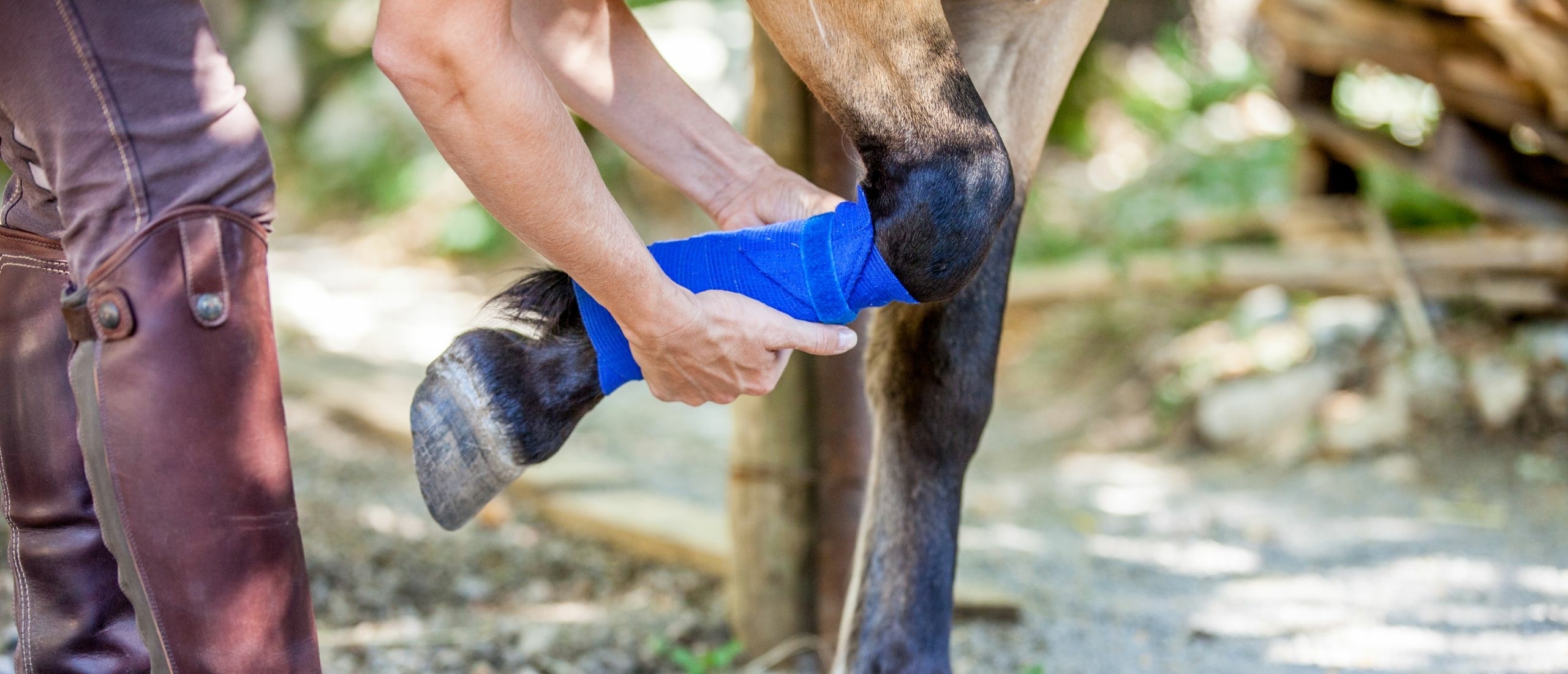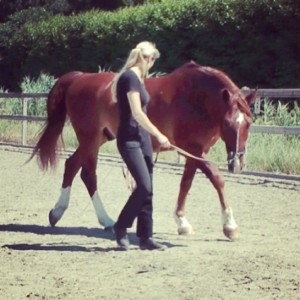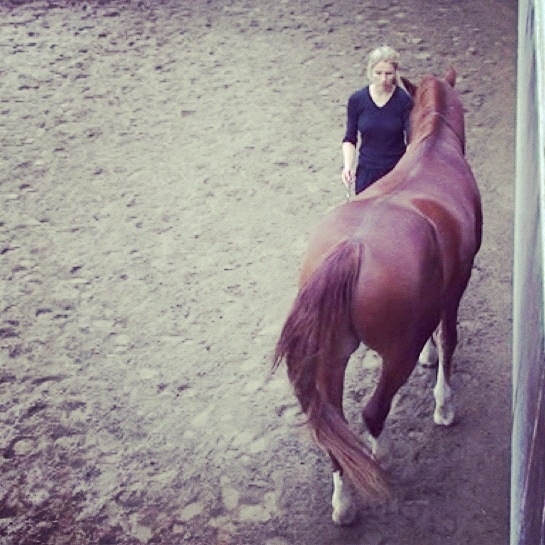
Recovering from an injury (rehabilitation)
A horse can have many injuries, such as:
- Hoof abscess
- Colic
- Inflamed joints
- Muscle injuries
- Tendon injuries
- Bone injuries
- Navicular disease
- Kissing spines
- Arthritis
- Lameness
When a horse is recovering from an injury, Straightness Training can be very helpful, especially because we can apply 4 other training pillars besides riding: groundwork, longeing, work in hand and liberty training.
Now when a horse has an injury in one part of his body, or one particular leg, he starts to compensate in other parts of his body, and that creates imbalance and stiffness most of the time.
 So when the acute phase of the injury is over, but the horse is not yet fit to carry a rider, you can already start doing some light groundwork to supple his muscles. With groundwork you can rebalance the horse in a comfortable way.
So when the acute phase of the injury is over, but the horse is not yet fit to carry a rider, you can already start doing some light groundwork to supple his muscles. With groundwork you can rebalance the horse in a comfortable way.
Bringing a horse back from an injury is sometimes a long process, but especially with Straightness Training it doesn’t have to be a frustrating process!
Now of course the horse should have time to recover, therefore first get the horse better so the ‘acute phase’ of the injury is over. Then the following guidelines might be helpful to support your horse with ST:
12 Guidelines on how to support your horse’s recovery
 Here are some guidelines to help your horse with ST during his recovery:
Here are some guidelines to help your horse with ST during his recovery:
- #1: Team up with your veterinarian or other specialist to determine the best exercise program for your horse.
- #2: Start your horse from the ground, with groundwork.
- #3: Stay in the comfort zone of your horse and train ‘light’ to avoid discomfort and injury.
- #4: Adjust the keys of training to how your horse feels. There may be days when a simple LFS in walk will suffice. At ‘good’ days you might ask for some steps in mild collection in trot if your horse is familiar with that and has been educated to that level.
- #5: Adjust the training pillars to how your horse feels. There may be days when you only do the circles in hand but not on the longe line.
- #6: Adjust the exercises to how your horse feels. Use ST exercises to keep joints mobile while being careful not to overstress joints. Start any new exercise slowly and watch for signs of discomfort and for early indicators of a problem.
- #7: Adjust the gait to how your horse feels. At some days, only work him in walk, when he feels good, work him also in trot or even canter.
- #8: Adjust the transitions to how your horse feels. At some days decide to only do smooth progressive transitions (walk-trot, trot-canter), and skip the non-progressive ones (walk-canter) which ask for increased engagement.
- #9: To not stress the joints, avoid
– work at speed
– sharp turns and canter pirouettes
– exaggerated gaits and extended trot
– extreme collection
– jumping
- #10: Keep training if possible!
- #11: When your horse is a senior horse also check this article: 17 Tips to keep your senior horse fit and happy >>
- #12: Also, check the article about: Circles yes or no >>

